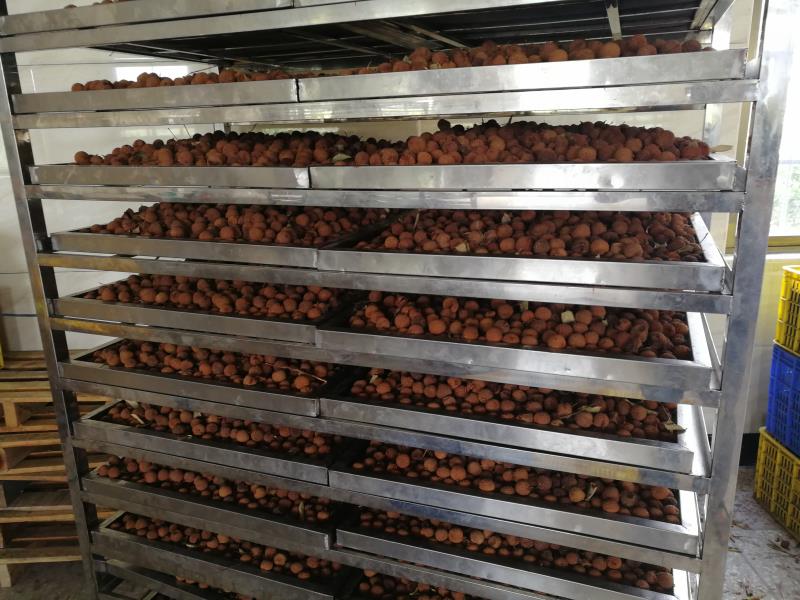Litchi is an evergreen tree belonging toSapindaceae. [Litchi is an even-pinnate compound leaf, glabrous, with a stalk,and slender lateral veins; no petals; the core is fruit-shaped, nearlyspherical; the seeds are all covered by fleshy arils. The flowering period oflitchi is from March to April, and the fruiting period is from May to August.The name of litchi comes from Sima Xiangru's "Shanglin Fu", in whichit is written as "Lizhi", and then changed to "Litchi" fromabout the Eastern Han Dynasty.
Litchi is produced in subtropical regionsand is a cultivated fruit tree distributed in Fujian, Taiwan, Zhejiang,Guangdong, Guangxi, Hainan and other places. Litchi likes high-temperature andhigh-humidity climate, likes sunshine, likes acidic soil rich in humus, and isafraid of frost. Litchi is generally propagated by sowing, layering, andgrafting.
"Compendium of Materia Medica"records that lychee has the effects of nourishing the liver and spleen,nourishing the liver and regulating qi, nourishing blood, warming the middleand relieving pain, nourishing the heart and calming the nerves, regulating qi,dispelling stagnation, relieving pain, and preventing diarrhea. Pharmacologicalstudies have shown that lychee core has the effects of lowering blood sugar,blood fat, anti-virus, and anti-liver damage. The theory of traditional Chinesemedicine believes that litchi core has the effects of promoting qi anddispelling stagnation, dispelling cold and relieving pain. When mentioninglychee, people will think of the poem "a concubine laughing on a ride inthe world of mortals, no one knows that it is a lychee". . China is theorigin of lychee and the largest country in lychee industry, with abundant andhigh-quality lychee varieties in the world. Litchi has the reputation of"the king of all fruits" in history, and it is one of the fruits withthe deepest cultural heritage in China. Litchi cultural heritage has Chinesecharacteristics and global influence, so research on its protection anddevelopment is of great significance.
 Call Us:
Call Us:  E-mail:
E-mail: 

 Address: Guangzhou City, Guangdong Province,P.R.China
Address: Guangzhou City, Guangdong Province,P.R.China
 TEL: +86-159-8924-9151/Whatsapp
TEL: +86-159-8924-9151/Whatsapp
 E-mail:
E-mail: